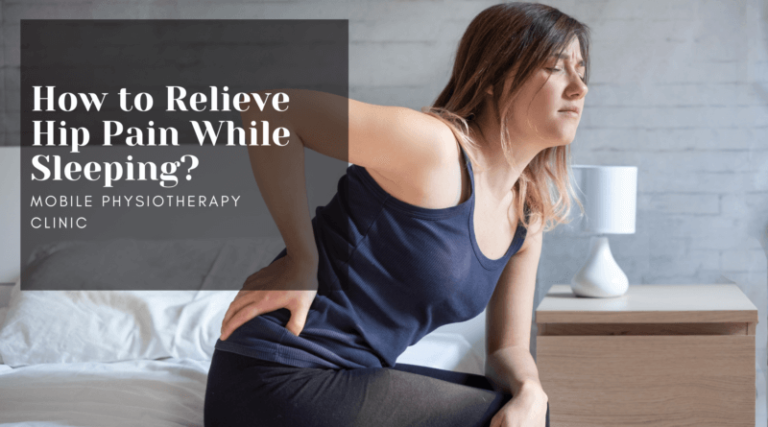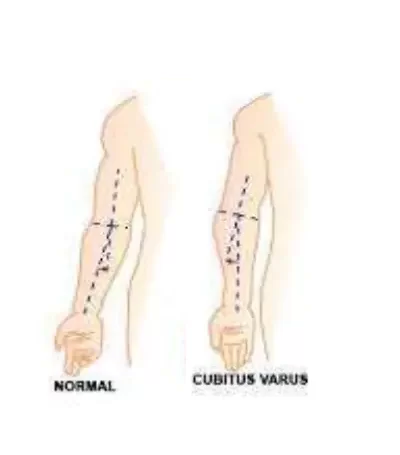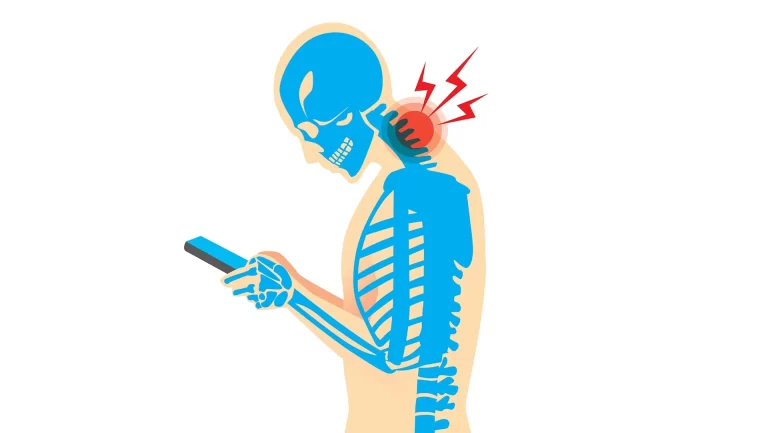Ankle Hurt When Walking
Walking is a fundamental human activity that is often taken for granted until discomfort or pain arises. One common issue that many individuals encounter is ankle pain while walking.
The ankle joint plays a crucial role in supporting body weight and facilitating movement, making any discomfort in this area particularly impactful on daily activities.
Whether caused by injury, overuse, or underlying medical conditions, ankle pain can significantly affect mobility and overall well-being. Understanding the causes, symptoms, and potential treatments for ankle pain when walking is essential for effective management and recovery.
Overview
The ankle is one of the most versatile joints in the body, designed to support our weight and allow fluid motion for activities like walking, running, and jumping. At the same time, the complex anatomy of the ankle, with its intricate network of bones, muscles, tendons, and ligaments, also makes it vulnerable to painful injuries and conditions.
Ankle pain while walking can have many different causes, ranging from simple sprains to more serious medical issues within the joint.
Ankle Anatomy
The ankle consists of three bones: the tibia (shinbone), fibula, and talus. The tibia and fibula bones make up the lower leg, while the talus sits at the base of the leg and forms the telltale ankle “knob” on either side.
These bones are stabilized by ligaments including the ATFL, CFL, and deltoid ligament on the inner ankle. The joint is also supported by tendons—cord-like tissues connecting muscle to bone. Key tendons include the Achilles tendon attaching the calf muscles and the peroneal tendons on the outer ankle.
Causes of Ankle Hurt When Walking
Many possible origins of ankle pain occur while walking, including:
Ankle Sprains
Rolling the ankle inward or outward can overstretch ligaments on the outside or inside of the ankle joint. This causes tears in the ligaments, bleeding, swelling, and instability in the joint. If ankle sprains are not properly treated with rest, compression, elevation, and rehab, it can lead to chronic pain and arthritis.
Achilles Tendonitis
The Achilles tendon at the back of the ankle endures repetitive motion and overuse during activities like walking, running, and jumping. Microtears and inflammation can develop near the heel bone, causing stiffness and soreness, especially when pushing off the foot.
Arthritis
Osteoarthritis from aging and joint wear and tear can lead to painful bone spurs and stiff ankles. Rheumatoid arthritis—an autoimmune condition—also causes ankle swelling, stiffness, and damage over time. Arthritic ankles typically hurt while walking and at rest.
This form of arthritis stems from high uric acid levels, forming crystals in the soft tissues and joint spaces. A gout flare-up leads to red, hot, extremely tender ankles. Even minor activities like walking can be excruciating during an active gout attack.
Stress Fractures
Hairline cracks or small breaks in the ankle bones often result from repetitive impact. They cause progressive ankle pain that emerges while engaged in weight-bearing activities like running or walking.
Nerve Irritation
Direct trauma, chronic ankle instability from ligament damage, compression from bone spurs, and arthritic changes can irritate nerves around the ankle. This leads to burning, tingling, or shooting ankle pain, especially when moving the joint.
Symptoms Related to Ankle Hurt When Walking
Common symptoms that arise with conditions causing ankle pain due to walking include:
- Swelling around the ankle joint
- Tenderness directly over the sore spot
- Stiffness, reduced range of motion
- Limping gait, changes in walking
- Instability, “giving out” sensation
- Bruising, redness over joint
- Clicking, popping sounds
Other symptoms like tingling, numbness, and burning could indicate nerve involvement. The exact location of ankle pain can hint towards certain conditions–for example, pain in the back of the ankle could signal Achilles problems.
Treatments of Ankle Hurt When Walking
Initial Treatment
The first line of treatment for most forms of ankle pain typically focuses on managing swelling and inflammation in the early stages of injury. This includes some variations of the “RICE” method:
- Rest: Avoid weight-bearing activity and give the ankle a break from repetitive impact & strain. Using crutches can assist with immobilization.
- Ice: Apply ice wrapped in a thin towel for 10-15 minutes several times a day. Icing helps relieve localized pain and curb inflammation.
- Compression: Snugly wrapping or bracing the ankle limits swelling. An elastic wrap or ankle support brace works well.
- Elevation: When possible, prop up the injured ankle above heart level to utilize gravity to drain fluid buildup.
Medications
Over-the-counter oral medications help control ankle pain and inflammation. These include non-steroidal anti-inflammatories (NSAIDs) such as ibuprofen (Advil, Motrin), naproxen (Aleve), and pain relievers like acetaminophen (Tylenol). Stronger prescription medications may be given for severe or chronic ankle problems.
Immobilization
With moderate-to-serious sprains, high ankle sprains, stress fractures or severe tendonitis, a period of immobilization in a walking boot or cast allows tissues to heal. These devices prevent unwanted ankle movement during the initial rehab period, which typically ranges from 2-6 weeks depending on severity.
Physiotherapy
Once swelling diminishes and initial tissue healing begins, a customized PT program helps rehabilitate the ankle. A typical regimen includes gentle joint mobilization, range of motion exercises, stretching, progressive strength training, neuromuscular re-education, balance activities, and modalities like ultrasound or iontophoresis.
The duration and intensity increase gradually based on the injury, response, and return to normal function. Home exercise programs supplement the hands-on PT.
Bracing
Ankle braces with plastic supports or flexible athletic tape jobs restrict unwanted motion in those prone to instability and recurrent injuries. These also provide compression. Ankle stirrup braces or high-top sneakers work well long-term in those recovering from severe sprains by limiting side-to-side movement during activity.
Surgery
If more conservative measures repeatedly fail to resolve symptoms, orthopedic surgery becomes the last resort. Procedures like arthroscopy remove irritating bone spurs and loose cartilage while ligament reconstruction tightly repairs torn remnants.
Ankle arthrodesis (fusion) aims to permanently stabilize and align the joint in those with severe arthritic damage, recurrent instability, or deformity using plates and hardware. Recovery from ankle surgery often spans many months with extensive therapy.
With appropriate treatment guided by a podiatrist or orthopedic foot/ankle specialist, individuals can regain comfortable ankle function for activities like walking without living in constant pain or frustration over instability. Adhering to activity restrictions and rehab protocols gives optimal healing results.
Physiotherapy Management
Physiotherapists play a pivotal role in rehabilitating ankle injuries that cause pain with walking. They employ various hands-on techniques and prescribe targeted exercises depending on the individual’s condition.
Initial Goals
Early physio goals focus on pain and swelling relief while protecting damaged structures from further harm. This progresses towards gradually increasing weight-bearing capacity and range of motion if appropriate.
Modalities
Physiotherapists may use modalities like:
- Ice packs to control inflammation
- Electrotherapy like TENS to relieve pain
- Ultrasound to stimulate tissue healing
- Laser therapy to decrease swelling
- Contrast baths (alternating hot and cold soaks)
Manual Therapy
Hands-on techniques like joint mobilizations and soft tissue massage alleviate muscle tightness and stiffness around the ankle. Gentle ankle pumps and rotations in non-weight-bearing positions help regain mobility. Manual therapy targets restrictions and adhesions.
Stretching
Calf, hamstring, quadriceps, and intrinsic foot muscle stretching maintains flexibility, prevents compensations up the chain, and facilitates proper gait patterns. Stretches are held for 30 seconds, repeating 3-5 times daily.
Strengthening
Isometric contractions activate muscles without taxing injured ankle structures. Progressing to eccentric heel drops with gradual weight bearing boosts concentric strength once tolerated. Open and closed kinetic chain and multi-plane drills re-educate proper movement.
Neuromuscular Training
Wobble board balancing improves proprioception (position sense) in the ankles and feet. Agility ladder and obstacle course drills enhance stability, power, and control. Hopping and jumping return shock absorption capacity for reducing recurrent sprains.
Orthotics
Custom shoe inserts help re-align the ankle and distribute pressure optimally. Orthotics alleviate strain on injured areas to prevent subsequent issues. Most insurance policies cover prescribed orthotics.
The physio works closely with doctors to clear patients to return safely to full activity based on their course of recovery. After discharge, home exercise adherence maintains gains from supervised rehabilitation.
How to Prevent Ankle Hurt When Walking?
While type and severity vary, almost all forms of ankle pain impact one’s ability to walk normally. Preventative measures include:
- Choosing proper footwear with adequate support
- Stretching and strengthening leg and ankle muscles
- Warming up gradually before exercise
- Taping or bracing vulnerable ankles during activity
- Practicing balance and agility
- Losing weight to avoid excess joint stress
Staying proactive helps minimize overuse and acute ankle injuries before they develop into larger problems.
Summary
The ankle is a complex joint prone to various injuries and conditions that can cause pain with walking. Key anatomy includes bones like the tibia, fibula, and talus stabilized by ligaments and tendons.
Common symptoms of problematic ankle pain include swelling, tenderness, stiffness, limping, instability, bruising, joint noises, or nerve sensations like tingling. The location of the pain can hint at potential diagnoses.
Various issues provoke ankle discomfort when walking, including sprains from rolling/twisting, Achilles tendonitis from overuse, arthritis, gout buildup, tiny fractures from repetitive impact, and nerve irritation.
Treatments are aimed at the underlying cause. Initial management focuses on the PRICE protocol (Protect, Rest, Ice, Compress and Elevate). People may require a boot or cast to immobilize severe injuries. Physical therapy builds strength and stability. Devices like orthotics or braces support the joint.
For pain continuing despite various conservative treatments, medications like anti-inflammatories or injections offer relief. Those with recurrent instability or joint damage may ultimately need surgery if unresponsive to other measures.
Prevention through stretches, muscle strengthening, proper footwear, taping/bracing, balance training, and weight control reduces the risk of developing chronic ankle issues. People should seek medical care promptly for unrelenting or worsening symptoms to maximize recovery chances. Addressing causes early and adhering to rehab protocols helps get patients back on their feet.
FAQ
How do you fix ankle pain when walking?
Rest and raise your ankle when you can.
Every two to three hours, apply an ice pack (or bag of frozen peas) wrapped in a towel to your ankle for up to 20 minutes.
Wear wide, comfortable shoes with a low heel and soft soles.
Put in some heel pads or soft insoles for your shoes.
To stabilize your ankle, put on a bandage.
How can I make my ankles stronger?
Bent-knee wall stretch.
Negative calf raises.
Towel tug.
Ankle pumps up and down.
Foot roll.
What are the signs of weak ankles?
sore ankles and feet.
frequent ankle sprains or injuries.
ankle often twisting outward when walking.
balance problems.
trouble keeping your ankles straight in heels.
References
Sawyers, T. (2018, October 9). Ankle Pain When Walking. Healthline. https://www.healthline.com/health/ankle-pain-when-walking
What Can Cause Ankle Pain When Walking? (n.d.). New Health Advisor. https://www.newhealthadvisor.org/ankle-pain-when-walking.html
Sinrich, J. (2022, June 1). Why Does My Ankle Hurt When I Walk? Verywell Fit. https://www.verywellfit.com/ankle-pain-when-walking-what-it-means-and-how-to-avoid-it-5323143
Larson, J. (2023, February 3). What Can Bring on Sudden Ankle Pain When You Didn’t Injure It? Healthline. https://www.healthline.com/health/sudden-ankle-pain-without-injury
Professional, C. C. M. (n.d.). Ankle Pain. Cleveland Clinic. https://my.clevelandclinic.org/health/symptoms/15295-ankle-pain








2 Comments